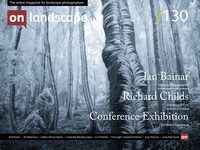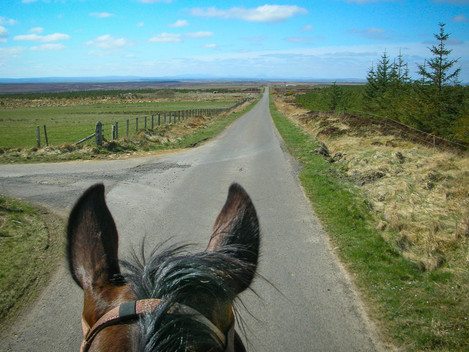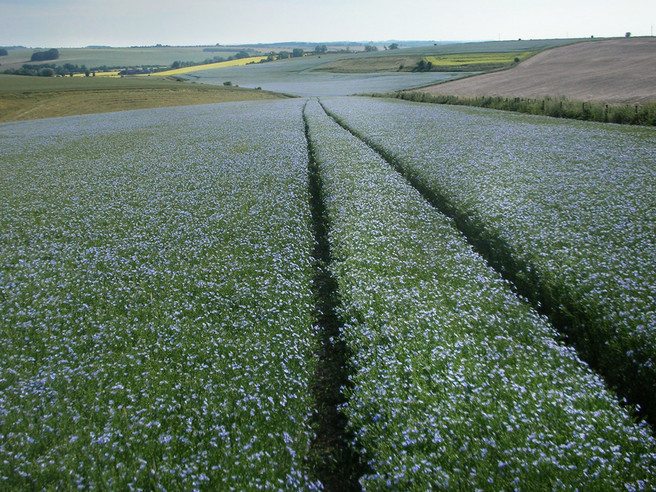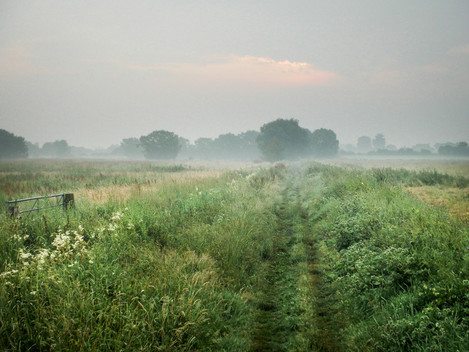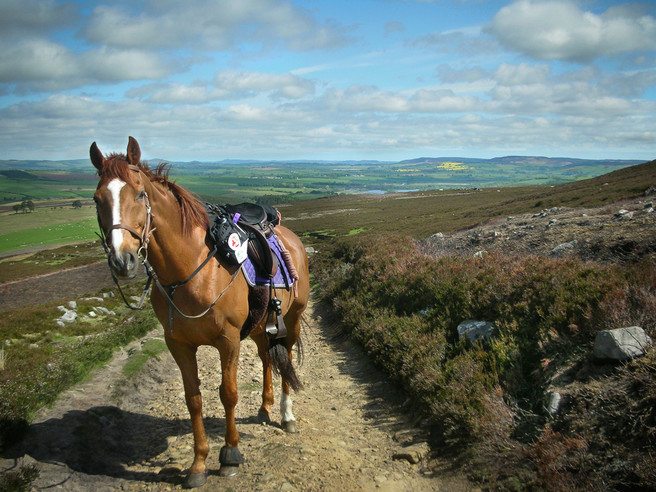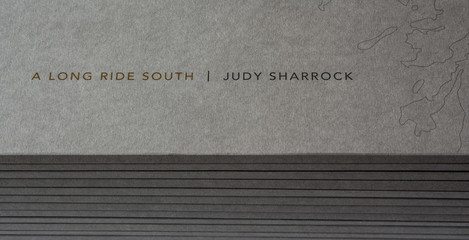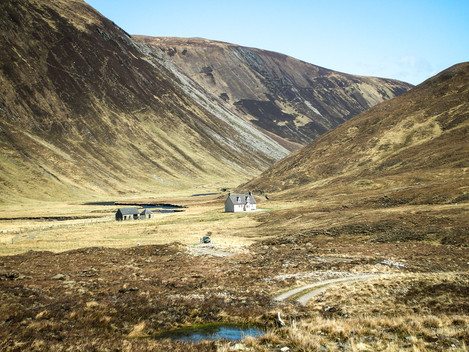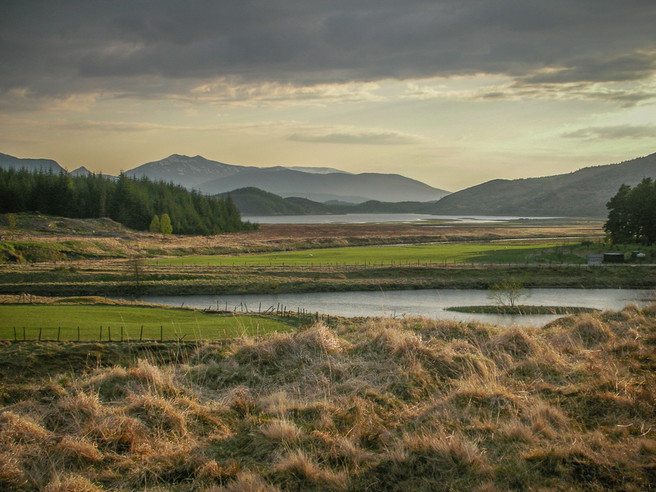An old unrecorded adventure

Judy Sharrock
Judy is a late and recent convert to the joys of photography. She lives in the New Forest but also has a house in Mellon Charles on the North West coast of Scotland, so both areas provide plenty of scope to develop her landscape skills in two contrasting but beautiful parts of Great Britain. (Author image taken by Julia Moffat.)
I have just published a book called “A Long Ride South”. It is a book that has grown out of a number of strands; an old unrecorded adventure, a growing love of photography, a desire to learn Adobe Indesign and encouragement from the wonderful Eddie Ephraums who made it possible.
The Adventure
Ten years ago, at a time where I had a Canon EOS and a passing interest in photography, a mid-life crisis evolved into a personal challenge to ride (horses not bikes!) from John O’ Groats to Lands End. The adventure was a year in the planning. As you can imagine finding a route which was as “off-road” as possible, and places for humans, a horse and horsebox to stay every night, was a big challenge. But on 30th April 2006, Monty, one of my two horses and I, set from John O Groats, eyes firmly looking South.
There were many fantastic things about the journey. To spend eleven weeks riding on horseback through some of the most beautiful and less travelled areas of Great Britain was a privilege I will never forget. To see the bleakness of Northern Scotland transform into the Highlands, then softer Perthshire and so on, all the way down to the rocky Cornish coastline, was an amazing experience. To see how the types of dry stone walling evolve as you move south; the slate slabs of Caithness, to the craft built walls of Northern England, to the misnamed “Cornish hedges” was one of the many fascinating regional changes I witnessed along the way. And the people were fantastic too. Everywhere we went they wanted to help me, with one possible exception in Yorkshire!
I used the ride as an opportunity to raise money for two charities, Great Ormond Street Hospital in London and my local charity, the Fortune Centre of Riding Therapy, a school for special-needs young people where they learn everything through the medium of horses, even how to cross the road.
To help with the fund raising during the ride, I put a daily blog on the internet, and this was also used by the Fortune Centre to help teach the students about maps and geography of Great Britain.
Each day I was limited to what I could carry happily on the horse. I did, however, find room for a small Nikon six mega pixel Coolpix Camera in my bumbag. I took photographs regularly each day, and each week they were sent home and a few put on the website with the blog. All of the images of the journey in “A long Ride South”, were taken with it. At the time, my only reason for taking a camera was to record the journey for myself and the blog.
My Photography
Over the last few years since the ride, I have taken photography, particularly landscape, more seriously and thoroughly enjoy days out with my camera and workshops with like-minded people in beautiful parts of the world. Photography is also a chance to explore whether I have any artistic talent lying dormant after thirty years of repression, working as a lawyer!
As a result, my photography since the ride has inevitably become a lot more considered. Now each image is carefully composed. Much time is taken in selecting the exact place, how to frame the image etc. You all know the score! On the ride, I think most images took less than thirty seconds from taking the camera out of the bumbag to putting it back. I did not even get off the horse, so a lot of the images were taken one handed. On numerous occasions, I had to retake an image because I had closed the camera down before the camera had finished processing. There was no thought of waiting for the light or finding the exact spot, though we might have moved a step or two to find the best vantage point over a hedge. I probably considered where the sun was, but only as to whether it was worth taking the image at all! I never considered the brightness of cloudless days and, as we were very lucky with the weather, there are many clear blue skies in the images. So I finished the ride, ended the blog, and all the images sat on an external hard drive, forgotten.
But as I got more into my “considered” photography, the question arose of what to do will all of the images I was creating. Print the best ones? Fine, but printing seems like a whole new “Dark Art” which I am only just summoning up the courage to learn. And in any event, we only have so much wall space. Collate the images and view on the computer. Not very satisfying. Make a book? For me, that has a lot more appeal.
I like a project to focus (pardon the pun) my photography around, so something like a book project is very attractive. I also like the potential that a series of images provides to say something more profound than a single image. Eddie Ephraums then explained his photo-book mentoring scheme to me, which sounded just what I was looking for. He also explained that to get involved in creating a book; I should get involved in the design process and even get to grips with Indesign, the Adobe publishing software.
That was when it occurred to me that the images I had from the ride, which had been forgotten for ten years, would be the perfect project to start with. Since the ride, many people had suggested I write a book about it, but I never have. But a book created from the existing images was a much more enticing and achievable idea. I could start to learn Indesign and finally create a lasting record of the ride. I also devised a concept of a limited edition book, sold at a premium, with all of the profit going to one of the original charities, the Fortune Centre. Eddie cleverly refined this by suggesting an edition of 78, the number of days of the ride and then selling them for £78 each, of which £45 from each book will go to the Fortune Centre.
The Book Concept
Eddie and I agreed that a chronological layout of the selected images was the most powerful. We wanted the reader to feel they were themselves travelling from north to south down the length of Great Britain. Eddie devised a long thin format for the book so that seven or eight images could be seen at a time when the book was open, enhancing the sense of a journey.
The images themselves are mainly simple views of the area I was passing through, some taken through the ears of the horse, to remind everyone that this was how I saw the world. It’s a good view from a horse. You are higher up than you would be walking or on a bike, and moving at a speed which enables you to fully appreciate and absorb your surroundings, at least when I was not concentrating hard on the navigation, which was a lot of the time!
The book includes a short edited extract from each day of my blog to add some context to the images and the journey.
There are approximately 150 images in the book. Each image of itself may not be a work of art from a landscape photographer’s point of view. In fact, few if any would merit any interest from On Landscape. But, before I had the idea for this book I remember a well-known landscape photographer telling me that if you want to put together a series of images, they should each make the same contribution to the whole. This would not, however, happen if some images were significantly “better” than others. This advice struck a chord with me at the time, and I think this book demonstrates what good advice it was. Any one of the images in the book, on its own, is a holiday snap. Put 150 together in a geographical sequence, and you have a journey.
Image Selection
I took images on almost every day of the ride. Some days I took more than others depending on the scenery, the weather and how involved I was in navigation and problem solving. Consequently, for some days it was difficult deciding which images to exclude from the book and for others there were not enough relevant images to choose from. I decided to include a few images of people to add interest and to link into the blog.
I was worried whether the quality of the images would be good enough, but Eddie assured me that they were for this type of travelogue. It was not meant to be a picture-perfect landscape photography book (just as well I thought!). There had to be enough images to create the effect of the journey, but not so many that the book became unwieldy, too expensive and, more importantly, failed to retain the reader’s interest.
Some images were taken to show the landscape we were travelling through. Some were taken to show problems I had, which were described in the blog. For example, there is a large picture of me looking rather stressed on Day 3, just after Monty had fallen through a bridge in the middle of nowhere.
The Book Production
Many cups of coffee were consumed at the Photographer’s Gallery in London where Eddie and I met to discuss all aspects of the book. There were so many things to consider: layout, size, type of paper, the colour of paper, cover design, how to bind it, whether to have a sleeve, etc. These were all things about which I knew very little and were all interlinked. For example, I could have an opinion as to whether I liked a certain paper, but I had no idea how that would influence the printing or the binding. I could suggest a colour for the cover, but that had to work with the predominant colours in the images inside and create the right feel for the book. Initially, I did not fully appreciate this interdependence. As an ex-city lawyer, I am used to the world where you make a decision and move on. With this process, Eddie and I took many “decisions” which we then had to review or change once we got to a different part of the process.
Initially, I found this a little frustrating but came to realise that you cannot rush the design and production processes. Attention to detail is everything. Identifying those details and finding the right solution that works for all of them takes time and consideration. For example; finding the correct size, colour and shade of font in each part of the book; should we use full stops at the end of the image captions; getting the right line weight of the map on the sleeve and cover; which type of binding will be robust enough for the long thin design of the book? In other words, the final design evolved from a lot of thinking and discussion, but above all from Eddie’s vast experience and intuitive design and bookmaking skills.
So finally, Indesign has been (partially) conquered, the images have been selected, the book designed and printed. I have enjoyed re-living the adventure through creating the book and, whether or not anyone actually wants to buy it, I now have a beautiful lasting record of those amazing eleven weeks in 2016. Time now to move on to the next project and the next book.
- A long road south shortly after leaving John O’ Groats
- Early morning on the Somerset Levels
- Flax field near East Kennett
- Moy near Loch Laggan
- Deanich Lodge on the Alladale Estate
- Camp Site at Loch Laggan
- Rannoch Moor
- Westy on Simonside Hills

